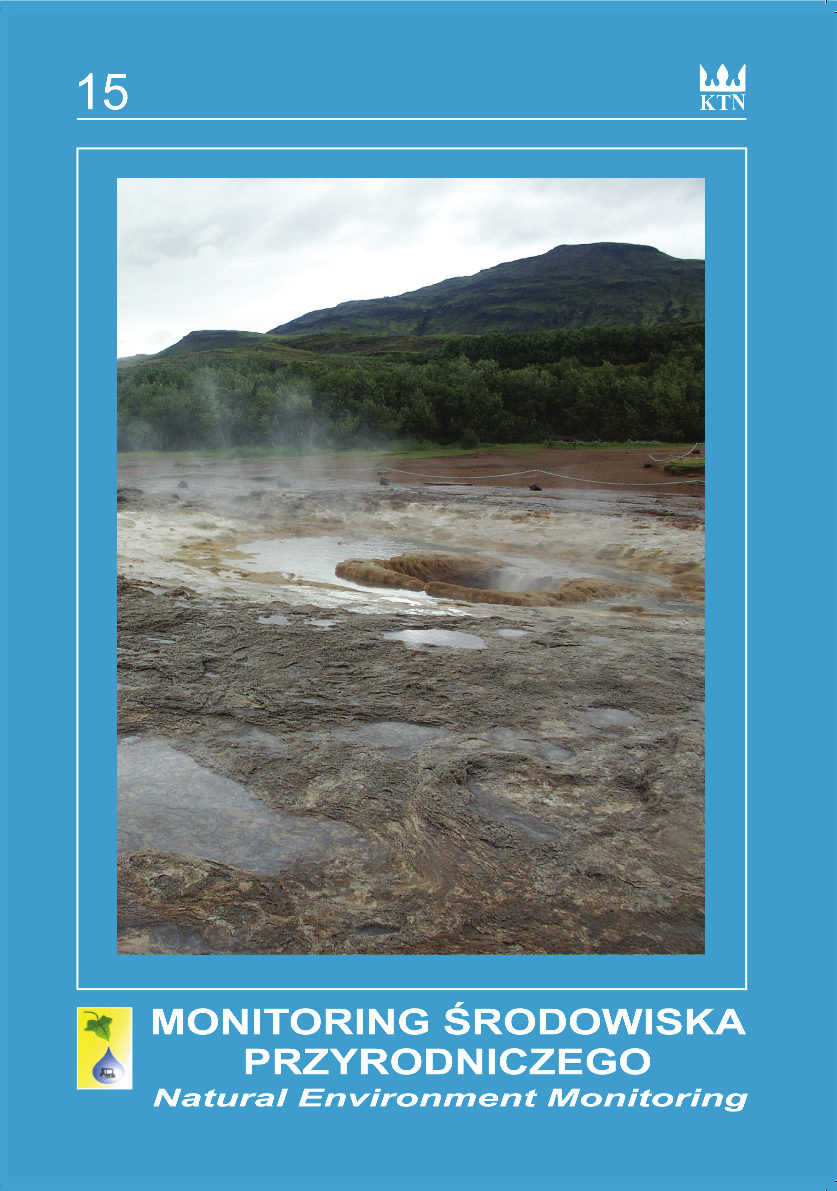by KTN | Oct 7, 2018 | Bez kategorii
Occurrence of heavy metals (Cu, Ni, Pb and Zn) in mosses in Kozienicki Landscape Park and Tatra National Park
Ryszard Świetlik, Marzena Trojanowska, Artur Molik
Summary
Heavy metal pollution is regarded as one of the most serious threats to the natural environment and also as a factor contributing to a poor condition of the forests. In Poland, combustion in manufacturing industry and in the municipal and residential sectors is mainly responsible for the release of heavy metals into the air. In the case of Pb and Zn an important role is played also by production processes and, in the case of Ni, combustion in energy and transformation industries as well. Biomonitors are often used to study the immission of heavy metals and their deposition in forest areas. Due to their omnipresence, characteristic structure and high tolerance of pollution, mosses turned out to be particularly useful for evaluation of heavy metal deposition in forest areas, particularly Pleurozium schreberi (Schreber’s moss) which is very common in those areas. The aim of this study was to examine the content of heavy metals (Cu, Zn, Ni and Pb) in mosses occurring in Kozienice Landscape Park (KLP) and Tatra National Park (TNP) and to evaluate the pollution by the heavy metals of the two forest areas. Three moss species were used: Pleurozium schreberi, Hylocomium splendens and Polytrichum commune. Moss samples were collected from fve sites in KLP (including three nature reserves): Źródła Królewskie, Miodne and Załamanek
as well as Poborskie Łąki and Kozie Ługi. In the TNP area the samples were collected from three valleys: Dolina Lejowa, Dolina Chochołowska and Dolina Białego.
The mean metal content in the green parts of the mosses forms a decreasing order: Zn > Pb ≈ Cu > Ni which is similar to the order formed by emission levels of these metals in Poland: Zn (1447 Mg/year) > Pb (543 Mg/year) > Cu (368 Mg/year) > Ni (179 Mg/year). The contents of heavy metals in Pleurosium schreberi samples collected in the three TNP valleys do not differ signifcantly but the heavy metal content in the samples from Załamanek and Miodne nature reserves is considerably higher than in the other KLP areas. Taking into account the local factors, road traffc emission can be pointed out as a potential source of anthropopressure. Comparing the obtained values of the content of heavy metal with the literature data for other forest areas, the heavy metal emission hazard for the investigated TNP and KLP areas can be regarded as
relatively low. However, it is worth noting that the level of zinc was slightly higher in the Pleurozium schreberi samples (TNP – av. 94.9 mg/kg d.w. and KLP – 88.4 mg/kg d.w.).
by KTN | Oct 7, 2018 | Bez kategorii
Variability of physicochemical properties of throughfall in the pine stands in Western Pomerania and Świętokrzyskie Mountains (Białe Zagłębie)
Rafał Kozłowski, Robert Kruszyk
Summary
The study presents the results of research conducted in the years 2010–2013 in pine stands in Western Pomerania and Świętokrzyskie Mountains (Białe Zagłębie). The study was conducted in pine stands located in two geoekosystems under the influence of varying the intensity of local and remote industrial immission. In spite of water loss via interception, the annual average load of ions under the canopy in both stands exceeded that in bulk precipitation. This is the result of the ongoing process of leaching and washout of dry-deposited elements. The total load of ions recorded in the pine stands 126.45 kg•ha-1•yr-1 (Malik) and 47.14 kg•ha-1•yr-1 (Czarne) exceeded the value
observed for the bulk precipitation nearly twice – 74.25 kg•ha-1•yr-1 (Malik) and 23.46 kg•ha-1•yr-1 (Czarne). In both stands the highest enrichment as expressed by the
enrichment factor was recorded for potassium, at 7.0 (Malik) and 5.8 (Czarne)

by webadmin | May 22, 2018 | Bez kategorii
by KTN | Feb 24, 2017 | Bez kategorii
ORGANIC FALL AS BIOINDICATOR OF GEOECOSYSTEMS CONDITION
Marek Jóźwiak, Małgorzata Anna Jóźwiak, Rafał Kozłowski
marjo@ujk.edu.pl; malgorzata.jozwiak@vp.pl; rafalka@ujk.edu.pl;
Key words: bioindycators, organic fall, geoecosystem
Summary
In two multi-species forest stands of different age, in an undeveloped climax fir-hornbeam-beech forest and in a beech forest with the immature fir-trees similar to a transitional forest type, the organic fall mass was similar during the research period. However, they fundamentally differed in the composition of assimilative organs which dominated in the fall. This phenomenon has plays a significant role in formation of different humus types in the soil. With a diverse age of forest stands a mosaic character of organic layers is connected.
From its content conditions types and sub-types of the soil humus. In the fir-hormbeam-beech stands the humus mosaics of the dendromorphic character are found; from the xeromorphic type of the thickness 15–20 cm under long-standing fir-tress to the non-contiguous layer of the fresh moder and fresh moder-mull of the thickness 2–3 cm to 0 cm under deciduous tree crowns. However, in the beech stand a uniform leaf cover of the thickness upto 10 cm with the humus of the moder- -mull type was found. It was found that the quality of the organic fall and connected with it types of soil humus are controlled more by biological feature of tree species prevailing in the forest stand individually or collectively than by their variety. It confirms hypotheses of Grime (1997) and Kutch et al. (2002). In the nearest neighbourhood two different forest stands cause the overlaying on the same soil type, by their fall, differently in arranged and changing with the forest stand soil subtypes and variations of soils subtypes.


